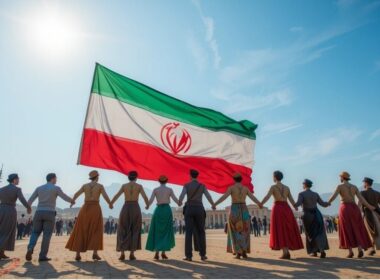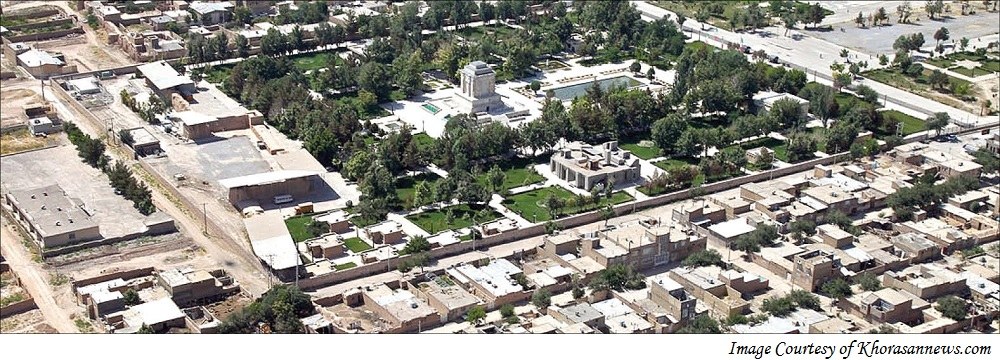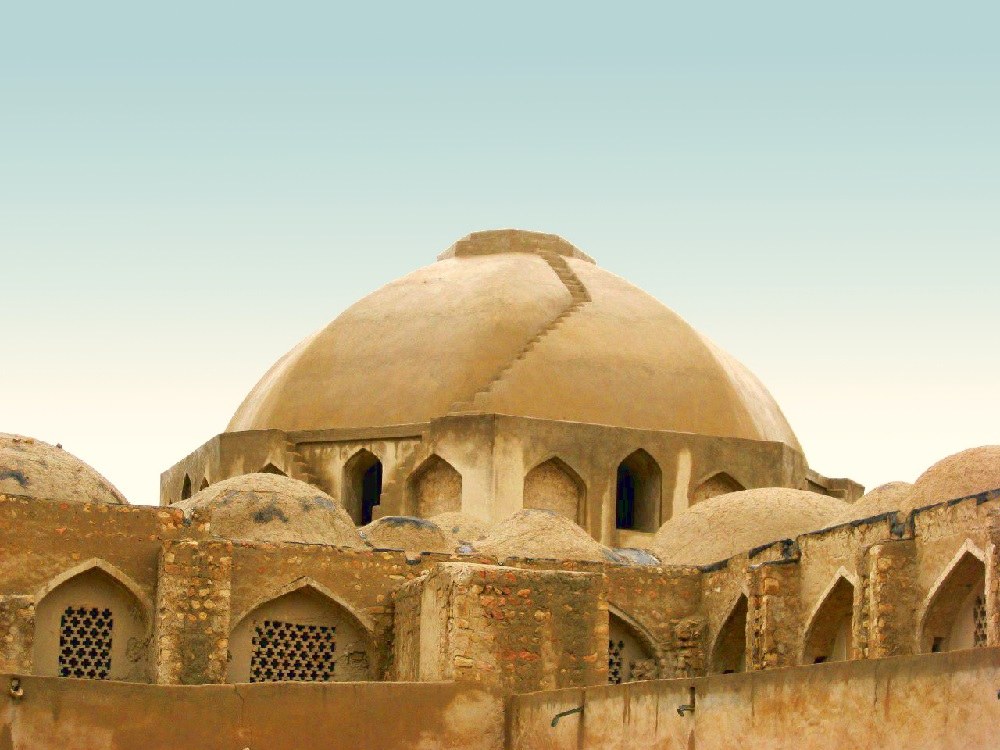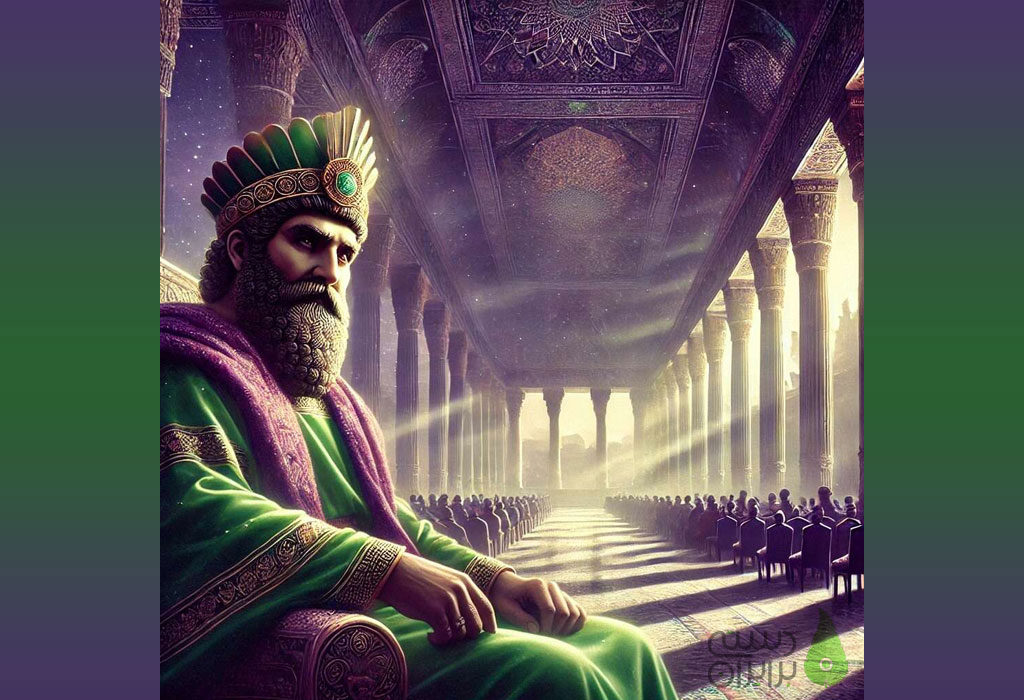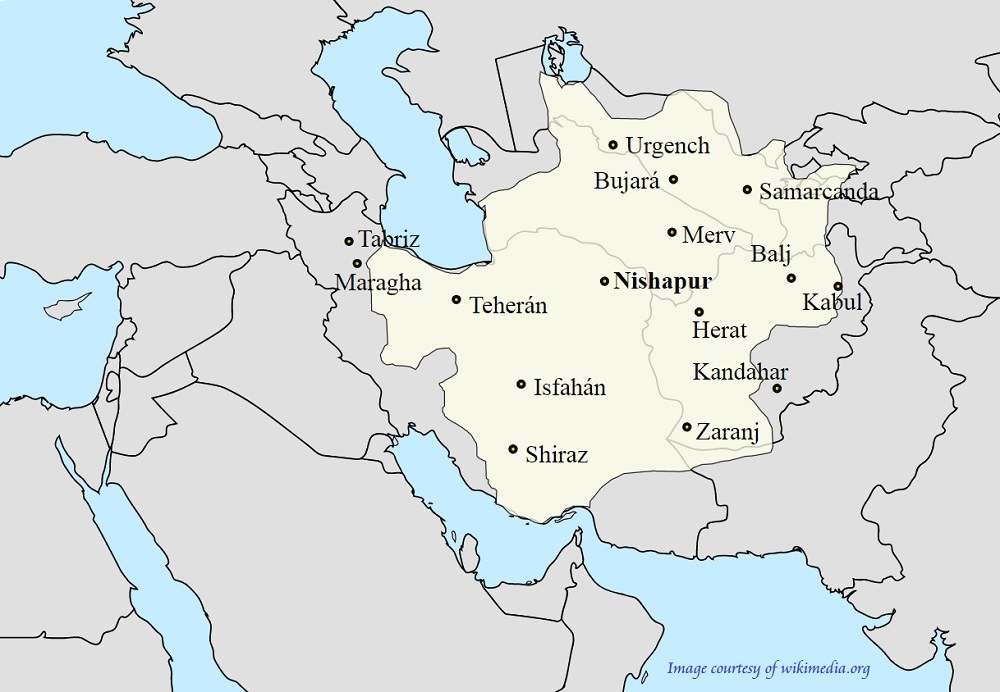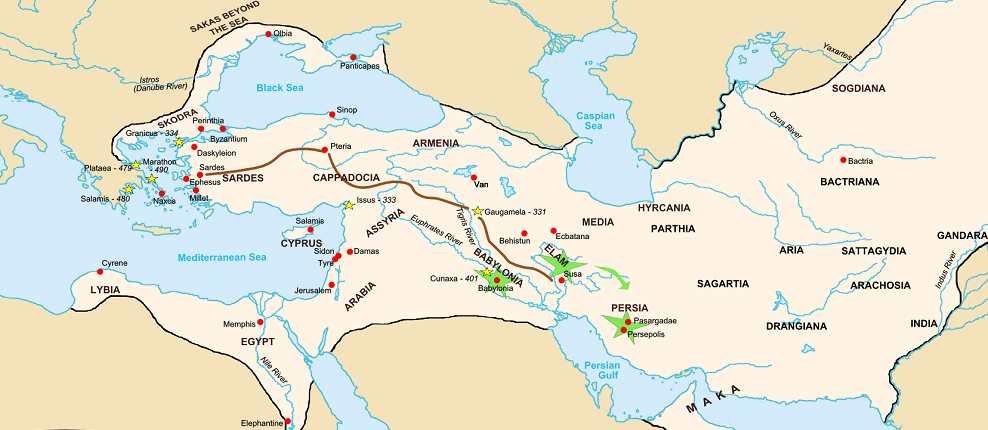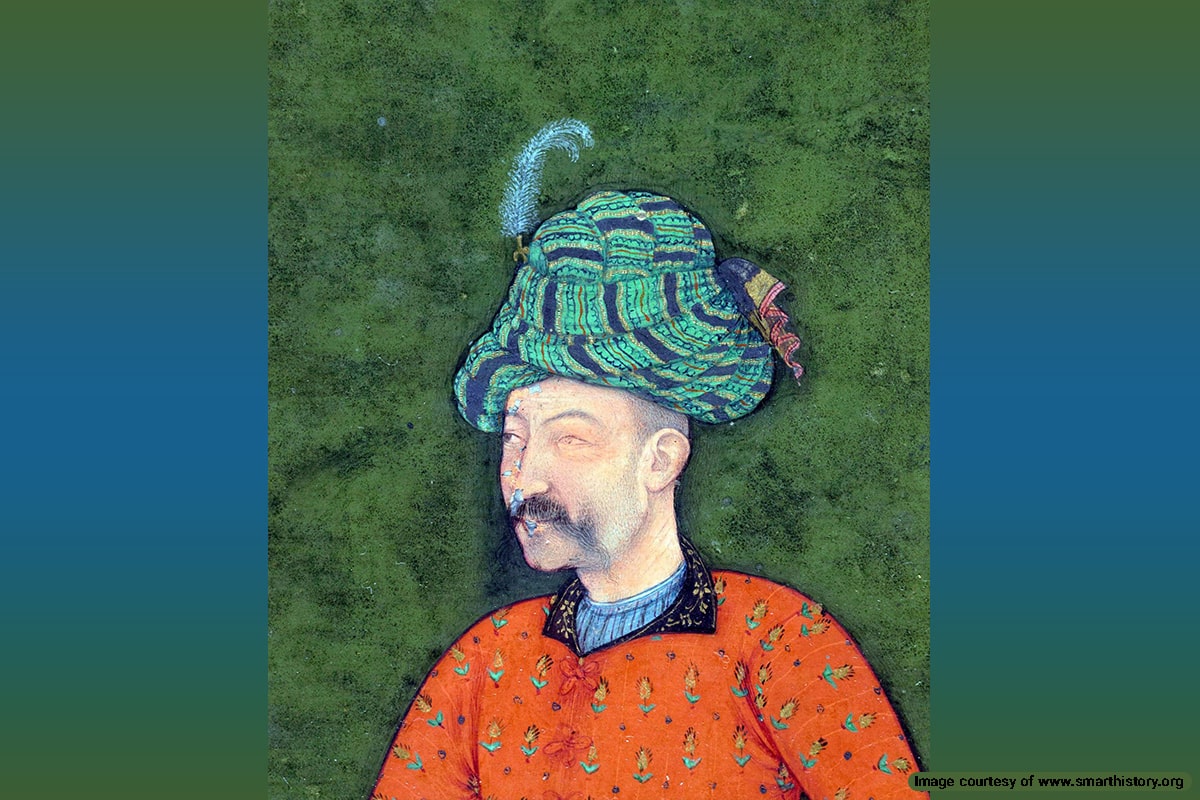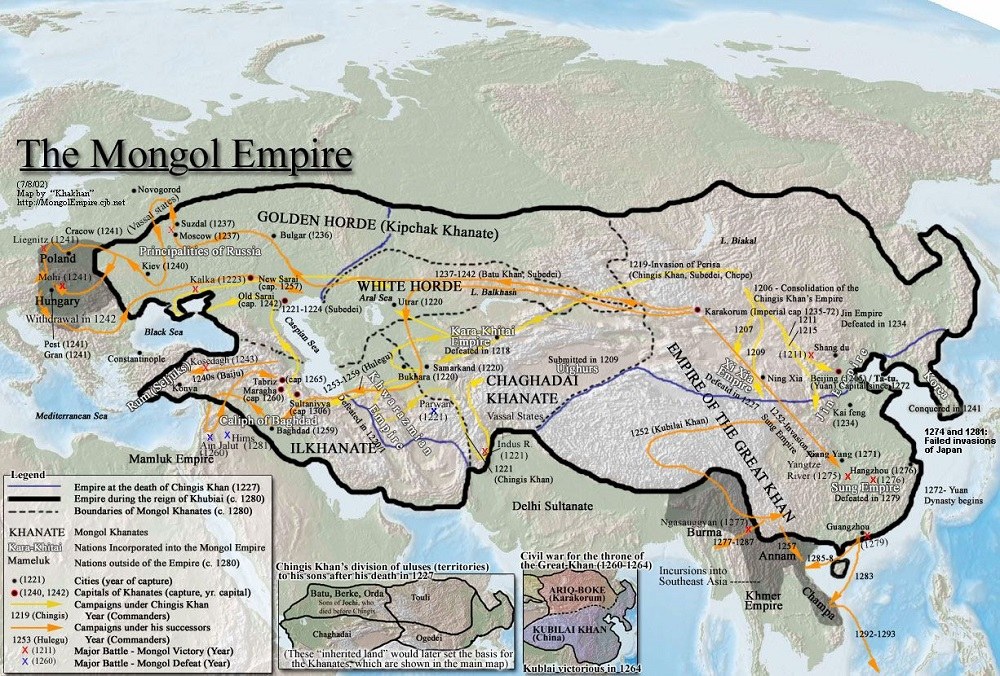
Before you read about the history of Ilkhanids, you need to know who Mongols were. There were various tribes living in the eastern part of the Transoxiana. “Mongols” was the name attributed to the union of these tribes. Some historians believe that they had been the descendants of Huns. If it is not true, one can at least compare their skills in archery, combativeness and using daggers with Huns. Also, the devastating invasion of Khorasan and Iraq, as well as their consequences, were some reminders of the Huns and their treating neighboring nations.
Chengiz Khan led Mongols’ army in attacking Iran. What he accomplished in Iran was revengeful devastation and plunder. After 40 years, when another Mongol leader called Hulagu invaded Iran for the second time, he founded Ilkhanid dynasty. By word, Ilkhanid means a system in which the heads of tribes rule.
History of Ilkhnids & Mongols’ Invasions to Iran
Chengiz Khan sent some Muslim Mongol merchants with friendly messages to Kharazmians. There were rumors spreading everywhere in Iran that they had been spies. Authorities ordered all 400 of them to be killed and their presents to be confiscated. Later, Chengiz sent his emissary to Iran with an objection message. He was also killed. These events drove Chengiz extremely outrageous and caused him to wage a deadly dreadful invasion on Kharazmians’ territories. The army of Mongols wiped out all cities in its way.
The innocent people of a vast area of Iran and Iraq were massacred by his revengeful attack. This revenge had not targeted Kharazmians. It had directed its deadly blow toward ordinary innocent people in a larger scale incomparable with the death of his 400 people.
Iran had to suffer from this attack and its consequences for 40 years before a second invasion was led by another Mongol, Hulagu. The Mongols invading Iran under Hulagu’s command were different from those under Chengiz’. Compared to Chengiz, they were more familiar with Iranians and their culture and beliefs. So, they treated Iran’s inhabitants more skillfully.
Ilkhanids Coming to Power
Before the second invasion of Iran, Hulagu knew he should have put an end to the rule of Baghdad’s caliph and Ismailis’ threat. Therefore, despite the submissive messages from the heads of Ismailis to Hulagu, he seized and shattered their fortresses. Baghdad’s caliph sent presents to him and tried to cast fear into his heart about attacking Iraq, but it did not work.
Abbasids’ capital was soon attacked and plundered. Abbasid caliphate system was brought to an end by Hulagu’s attack. They had also underestimated the military power of Mongols.
After dethroning Baghdad’s caliph, Hulagu proceeded further to the west of Asia and even reached Syria and Palestine. Hulagu and his Christian wife had planned to join the crusaders to exterminate Muslims. But Hulagu’s brother died and he returned to Mongolia. Then, he divided the conquered territories among his sons and obedient commanders.
Hulagu initiated the reconstruction of the devastations afterward. So, Hulagu founded Ilkhanid dynasty this way in Iran and declared Maragheh as his capital. Hulagu ruled over the areas that today comprise Iran, eastern Iraq, western Afghanistan, and Turkmenistan.
Hulagu’s Successors & Ilkhanids’ Collapse
The history of Ilkhanids indicates that Abaqa Khan continued Hulagu’s plan in joining crusaders, but he suffered a major defeat from Egyptians. Disagreement over the throne began among Mongols. Immorality, debauchery, and sensuality were leading Mongol Khans to decline.
Ghazan Khan converted to Islam, disobeyed the orders of Mongolia’s Khan and changed the policies of his capital, Tabriz. Also, he ordered the destruction of churches, synagogues, and temples of other religions. Therefore, he encountered many dissidents among Mongol commanders and princes. Mongol’s prestige had been tarnished as a result of military failure against Egyptians and Mongol Khans’ conversion to Islam.
Ghazan Khan’s brother, Oljaitu converted to Shiite Islam and changed his name to Khodabandeh. He committed himself to executing Sharia, Islamic law, and Ghazany justice law. He founded Soltaniyeh near today’s Zanjan as his capital. Like other Mongol khans, he attacked here and there militarily sought the pleasure of drinking, and led a life full of dissipation. He died quite early in life because of this.
Abu Saeed succeeded Ghazan Khan. There were increasing debates about the ownership of lands and properties toward the end of Ilkhanids’ rule in Iran. He was also a morally corrupt king who infringed the rights of people. After Abu Saeed, the Ilkhanids’ government began to decline.
Fighting over power and various conspiracies aiming at gaining power made their government less authoritative and powerful. As Malek Ashraf, the next Khan was murdered, the Ilkhanid era also ended and the Ilkhanid broke up into small states ruled by Ilkhanate Iranians.
Religious Shift of Ilkhanids
The mass conversion of Mongol invaders to Islam is one of the key events in Ilkhanid history. This shift brought Islamic Sharia into play, which replaced the Yasa, Genghis Khan’s defacto rule of law over his territories. In addition, it is seen as the gentrification of primitive Mughul tribes and the increased influence of Iranian viziers and counsel.
The religious shift officially started with the death of Arghun, who had fought the first major Mongol emir Nawruz Khan from Khorasan that converted to Islam. After his death, the Ilkhante’s power diminished because of its opposition toward Muslims. While the conversions were superficial at first, the impact of Islamic ideology gradually grew among the invaders.
During the reign of Gaykhatu between 1291 and 1295, the majority of the Mongol population in Islamic territories converted to Islam, while the court maintained its Buddhist traditions. In 1295, he was overthrown by Mahmud Ghazan, the first Ilkhanid king to convert to Islam. Influenced by Nawrūz (the son of Arqun Aqa), he made Islam the official religion of the Ilkhanid court, which deprived Jewish and Christian subjects of their equal citizenship rights. This move improved the court’s financial situation, which had been damaged by Gaykhatu’s policy of paying subjects for their support.
Ghazan forced the Buddhists in his kingdom to either accept Islam or be expelled from the realm. This intolerance alienated the diverse population, eventually leading to the murder of Nawruz. Realizing his mistake, Ghazan made religious intolerance a punishable crime and sought to spread religious tolerance to maintain stability. Despite the religious shift, the Ilkhanid court remained hostile towards the Egyptian Mamluk Sultanate, who lost control of Syria in 1299.
His brother Oljaitu, who had converted to Islam in 1291 and chosen the name Mohammad Khodabanda, succeeded him in 1304. Oljaitu practiced Buddhism and Christianity in his lifetime and even adopted Shia beliefs for a brief period. He ordered the construction of Soltaniyeh City and Soltaniyeh Dome. It is said that towards his death, he reverted to Sunni Islam.
There are reports that he even reverted to Buddhism and Shamanism for a brief period before his death. This was the result of efforts by Buddhists who were subjected to violence by the recently converted Mongols who had assaulted them.
His son, Abu Sa’id Bahadur Khan gained power after his father was poisoned and killed. He made attempts to improve Haj pilgrimage conditions in Mecca and aid the caravans headed towards the holy city. During his reign, the Ilkhanids had the most number of reported pilgrimages to Mecca. He even attempted to initiate friendly relations with the Mamluk Sultanate towards this end. Bahadur Khan ordered the construction of bathhouses and schools in Madinah, and reviving water springs in Mecca.
After Abu Sa’id, his son Arpa Ke’un rose to power with the help of Ghias al-Din, the late king’s vizier. Arpe Khan was coronated as Sultan Muiz al-Dunya wa’l Din Mahmud. He did not practice Islam and leaned towards imposing Gengis Khan’s Yasa instead of Islamic Sharia.
History of Ilkhanids’ Administration System
Under the Ghazan Khan, the Ilkhanid dynasty became independent of Mongolia’s Khan. The communication system went through a reorganization process. The army was reformed. Although new Mongol elements were infused in both art and architecture, Iranians continued their culture in their own ways. Along with Mongolian, other languages were also employed like Turkish, Persian, and Arabic. The history of Ilkhanids witnesses some poor administration during the later part of these invaders.
All through the Mongols’ reign in Iran, the history of Ilkhanids is a witness to the fact that Iranian ministers were the ones who took care of administering the country. The people who did the ministerial job were all Iranians and the job was very critical. Except for one of them, all other ministers were ordered to be killed by Khans and their properties were confiscated to compensate the budget deficits.
New systems of taxation were introduced. The rulers financed the Ilkhanid government with what was gained in wars, customs offices, and taxation. Foreign trade was relatively flourishing. This could create part of the government’s financial needs.
The governors of various parts of the Ilkhanids’ empire presented different gifts and bribes to the Ilkhanidcourt. They collected some direct tKhanateom people. Of course, because of corruption, tax collectors generally took parts of such taxes or all of them before they got to the treasury.
Interesting Points about The History of Ilkhanids
Mongols converted to Islam and could not force or inspire the conquered nation, Iranians, with their own beliefs. Instead, Iranian culture and beliefs inspired and overwhelmed them. Ilkhanids tolerated other religions and did not force anyone to convert to their religion. Under Ilkhanids, the followers of all religions were free to practice their faiths in Iran.
As a result of the Mongols’ conversion to Islam, new trade between the West and the East began. The silk route emerged in MongolEasteign more substantially. Chinese silk and Indian spices were carried to Europe. On the other hand, European goods reached all along this route. Christian missionary delegations also traveled on this route to attract Mongols’ support of crusaders.
Some fields of study grew considerably in Iran like astronomy, mathematics, and medicine. Poetry and literature flourished a lot during Ilkhanids. Some of the world-class Iranian poets belonged to this period. Hafez, Sa’dy and Molavay (Rumi) were a few such examples. These accomplishments in Persian literature owed to the influence of pre-Mongols’ civilizations present in Iran. The effects of Mongols’ destructions and massacres became more evident in Iranian communities after some generations.
Under Ghazan Khan, various crafts and sciences thrived. He had a remarkable knowledge of the history of ethnic groups and nations of his time. Therefore, historians wrote valuable books. He also ordered the construction of several huge structures in his capital, Tabriz, like mosques, madrasas, khanqahs, palaces, bathhouses, etc. Although Ilkhanid architecture was the continuation of the Seljuk archetype, a new combinational architectural style emerged as a result of building such huge structures.
Textile industry thrived during Ghazan Khan in some cities like Tabriz, Yazd, and Kerman. The merchants of Western Europe were the customers of Iranian textiles. Some Mongolian tastes could have been seen in this art as a result of Ilkhanids’ presence as well.
Music and painting also flourished a lot during the reign of Ilkhanids. Several schools of Persian miniature emerged and the major workshops in large cities followed their own local tastes.
Iranians’ Lives under Ilkhanids
Common people suffered a lot from the oppression applied to them by Khans and their officials. They were under the pressure of high taxes too. Drought and poverty had been imposed on Iranians. There was a serious class difference between the poor and the rich. A few people lived relatively well and the rest lived miserably. Still, the number of the poor was increasing due to the lack of birth control.
Poverty and instability dominated the lives of many during the history of Ilkhanids. They served as some major causes to lead people toward Sufism. Hence, people built more khaneqahs and the community of Sufis grew. Mosques and madrasas also flourished as they were reliable sources of income for theologians.
Low ethics and corruption had caused prostitution to grow. Some wealthy people forced the poor to sell themselves in brothels. Some free women also had to work in such places because of poverty. These places were called “Kharabat”. Kharabats paid a special tax to the government. Under Ghazan Khan, Kharabats were working very actively.
So, he set some rules and regulations to prevent the expansion of such houses. For instance, the owners of Kharabats were not allowed to force women to prostitution or prevent them from leaving the job. Of course, this could not reduce the scale of prostitution, gambling, and drinking in Kharabats.
Toward the end of the Ilkhanids’ rule in Iran, decentralized states were subjects of chaos for a long time. As this system prolonged, local clashes and battles occurred, administrations faced a lack of order and discipline and the state of unrest prevailed as an outcome of instability.
What prevailed throughout all the incidents during the history of Ilkhanids was the dominance of ignorance, corruption, hypocrisy, and lies. This continued as a consequence of the Mongols’ invasion through the Timurids era until the Safavids came to power. To relieve such conditions demanded unity, which did not happen till the Safavid period.
Legacy of Ilkhanids
The Ilkhanid dynasty under Hulegu managed to unify Persian territories for the first time after the Arab invasion of Persia. Embracing Islam and the religious shift is considered the basis of this cultural development. This religious unity is another factor that led to the rise of the Safavids.
During the Ilkhanate rule, Iranian viziers such as Nasir al-Din al-Tusi gained more power and influence and managed to revive Persian culture and language. Under Mahmud Ghazan, they managed to instigate a cultural renaissance with the help of scholars such as Rashid al-Din. Under Ilkhanid rule, historians started to use the new Persian language to write historical accounts, which were predominantly in Arabic before their era. One such book is Jami’ al-Tawarikh by Rashid al-Din Hamadani, known as the first world history book. Masterpieces of Persian literature such as Saadi’s Gulistan and Bustan, Negarestan by Joveini,
Another significant impact of the Ilkhanid rule in West Asia was the simplification of trade because of centralized rule. Because of their friendly relations with the Chinese Yuan dynasty, trade ties between East and West Asia significantly developed, leading to a cultural shift in both regions.
One of the main consequences of this cultural exchange was the development of Iranian architecture under the influence of Chinese architectural heritage. The Ilkhanid style utilized elements from Seljuk architecture in their design. They built imperial monuments like Takht-e Soleyman, the Tomb of Uljaitu, the Soltaniyeh City, the Dome of Soltaniyeh, and the Pir Bakran Mausoleum.
The Ilkhanids built numerous mosques and caravanserai across Iran with innovative interior decorations. The use of geometric designs and intricate Arabesque patterns in the decoration is a key feature of their architecture. One of their innovations was the combination of plasterwork and brickwork decorations. They set the trends for Islamic architecture in the following periods.
In addition, they invented the double-entry accounting method independent of European developments. This innovation improved tax recording methods and overall finances in their period. This accounting innovation led to more transparent financial management, which helped with decision-making and investment in building new caravanserai. Their innovations in bookkeeping were later adopted by the Ottoman Empire and future dynasties.
In terms of succession, the death of Abu Sa’id led to a chaotic era in the end, creating a civil war among the Ilkhanid princes and emirs that led to the creation of conflicting regional governments. After the disintegration of their kingdom, the Ilkhanids were succeeded by several dynasties that controlled parts of their former territories. The dynasties included Jalayirids, Chobanids, Muzaffarids, Kartids, Sarbadars, Injuids, Mihrabanids, and Eretnids. After centuries of chaotic decentralized rule following the fall of Ikhanids, their legacy paved the way for the establishment of the Safavid empire in 1501.
In conclusion, the Ilkhanid legacy can be interpreted as overall positive. Despite the initial destruction and massacres by the Mongol invaders, they eventually adopted Persian culture and Islam and abandoned the Yasa. This change of heart led to the establishment of a more civilized authority over Iran.





